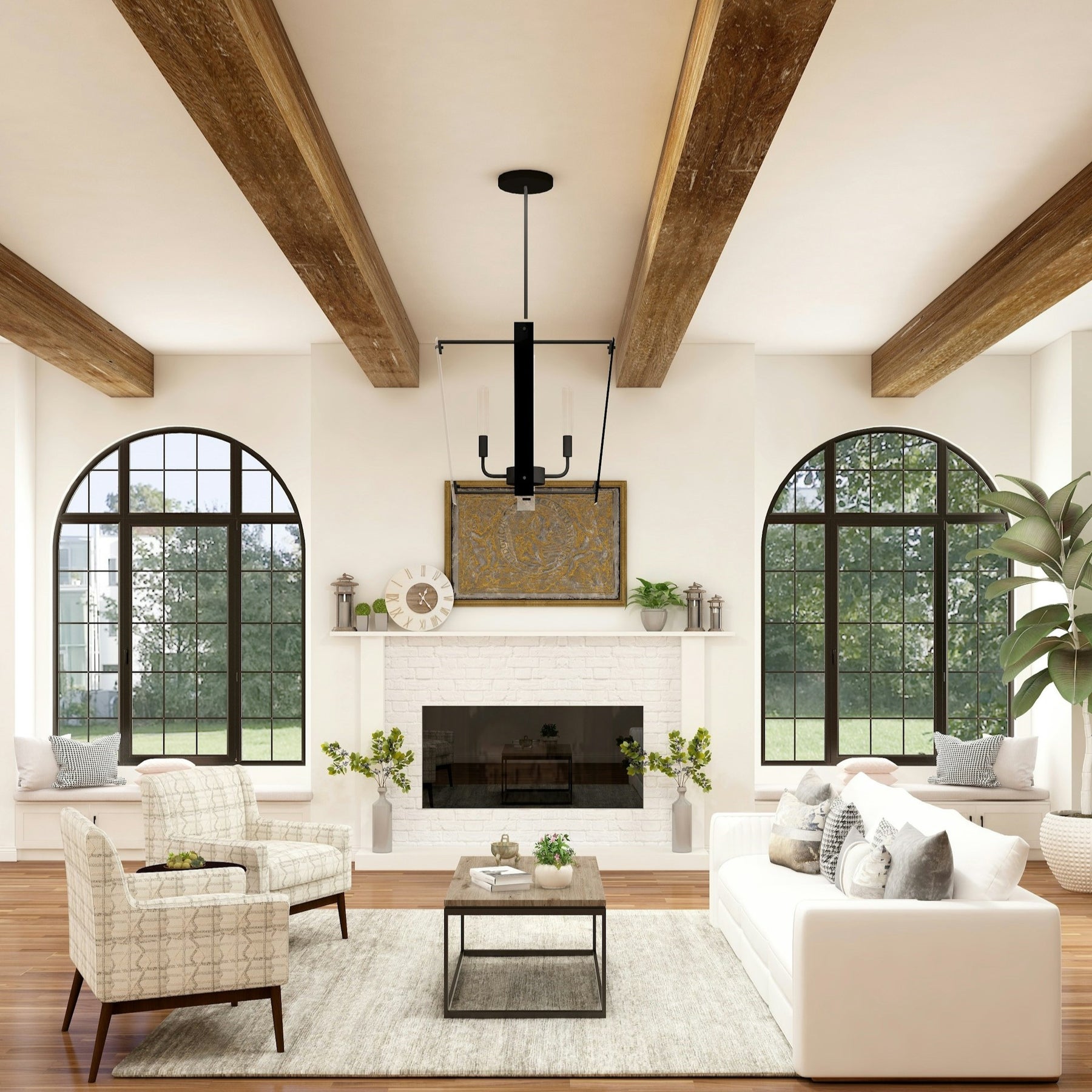With over 10,000 orders

A Guide to Understanding Lighting Calculations
Introduction
Creating the perfect ambiance in your farmhouse requires more than just choosing the right style of lighting fixtures. Understanding lighting calculations is crucial to ensure that your space is well-lit and functional. Whether you’re looking to enhance the coziness of your living room with ceiling lights, add a touch of elegance with pendant lights, or ensure practicality with wall sconces and battery-operated wall lights, knowing how to calculate the right amount of lighting is essential. In this guide, we’ll break down the basics of lighting calculations to help you make informed decisions for your farmhouse.
Why Lighting Calculations Matter
Before diving into the specifics, it's important to understand why lighting calculations are essential. Proper lighting not only enhances the aesthetics of your interior design but also ensures safety and functionality. With the right amount of light, you can highlight architectural features, create a warm and inviting atmosphere, and make everyday tasks easier and more comfortable.
Key Lighting Terms You Need to Know
- Lumens: A measure of the total amount of visible light emitted by a source. The higher the lumens, the brighter the light.
- Watts: A measure of energy consumption. Modern LED lights provide more lumens per watt, making them more energy-efficient.
- Foot-Candles: A unit of illuminance or light intensity. One foot-candle equals one lumen per square foot.
Step-by-Step Guide to Lighting Calculations
Step 1: Determine the Purpose of Each Room
Different rooms have different lighting needs. For instance, a kitchen requires brighter, task-oriented lighting, while a living room benefits from softer, ambient lighting. Here’s a quick reference:
- Living Room: 10-20 lumens per square foot
- Kitchen: 30-40 lumens per square foot
- Bedroom: 10-20 lumens per square foot
- Bathroom: 70-80 lumens per square foot
Step 2: Calculate the Area of the Room
Measure the length and width of the room to find the square footage. For example, a living room that is 15 feet by 20 feet has an area of 300 square feet.
Area=Length×Width
Step 3: Calculate the Total Lumens Needed
Multiply the square footage by the recommended lumens per square foot for the room type. Using our living room example:
Total Lumens Needed=300sq ft×20lumens/sq ft=6000lumens
Step 4: Choose Your Lighting Fixtures
Now that you know the total lumens needed, choose the lighting fixtures that will provide this amount. Ensure to check the lumens provided by each fixture to meet your calculated requirement.
Step 5: Consider Layered Lighting
For a well-balanced lighting scheme, use a combination of ambient, task, and accent lighting:
- Ambient Lighting: General lighting that illuminates the entire room (e.g., ceiling lights).
- Task Lighting: Focused lighting for specific tasks (e.g., pendant lights over a kitchen island).
- Accent Lighting: Decorative lighting that highlights certain features (e.g., wall sconces).
Step 6: Factor in Natural Light
Natural light can significantly impact your lighting needs. Assess the amount of daylight your room receives and adjust your calculations accordingly. Rooms with large windows may require fewer artificial lights during the day.
Practical Examples
Example 1: Living Room Lighting
A 15x20 foot living room requires 6000 lumens. You might choose:
- One central ceiling light providing 3000 lumens
- Two wall sconces providing 1000 lumens each
- Two table lamps providing 500 lumens each
Example 2: Kitchen Lighting
A 10x15 foot kitchen requires 4500 lumens. You might choose:
- One central pendant light providing 2000 lumens
- Under-cabinet lights providing 1500 lumens
- Recessed lights providing 1000 lumens
Conclusion
Understanding lighting calculations can transform your farmhouse into a beautifully illuminated, functional space. By following these steps and choosing the right lighting fixtures from Santostock, you can create the perfect ambiance tailored to each room’s needs. Remember, the key to effective lighting is a balanced approach that combines ambient, task, and accent lighting.
Explore our wide range of farmhouse-style lighting fixtures and start illuminating your home with style and efficiency today!
